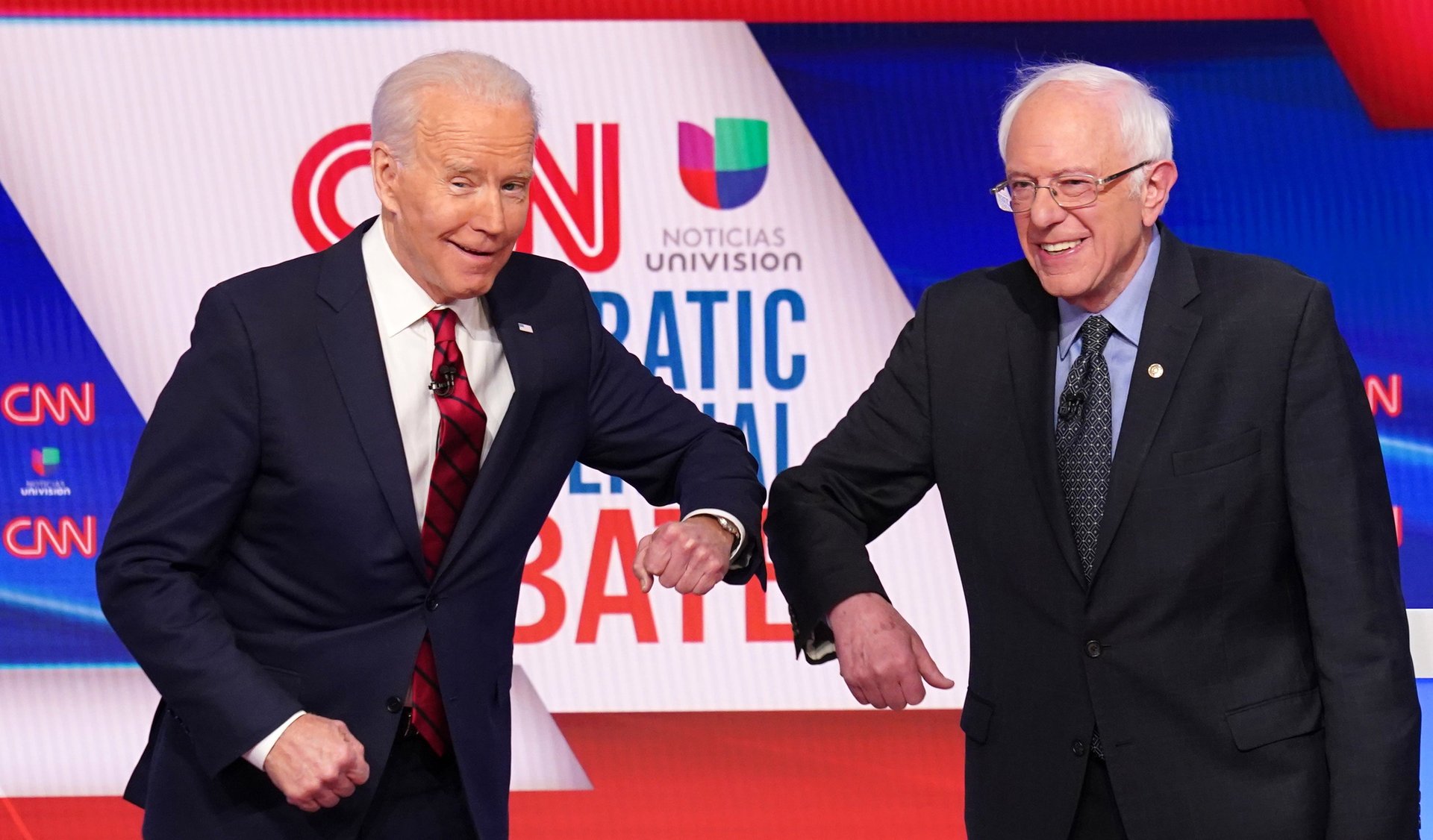We’ll probably see more political ads online due to coronavirus
Many of us can’t (or at least shouldn’t) leave our homes, eat at restaurants, or go to political rallies.


Many of us can’t (or at least shouldn’t) leave our homes, eat at restaurants, or go to political rallies.
But you can still scroll through Facebook.
And you’ll probably see more political ads while you’re there. Candidates and campaigns aren’t ramping up their spending; they’re just keeping it at roughly pre-pandemic levels.
But ad rates for some ads have plummeted, so each dollar buys more political ads than it used to.
A Quartz analysis of political ad spending data published by Facebook shows that, through Saturday (March 14), Joe Biden, the leading Democratic candidate for president, had not appeared to cut his spending below pre-Super Tuesday levels. (Sanders stopped all advertising on Facebook this morning, as Pundit Analytics first reported, but until then, his spending was steady too.)
Donald Trump’s reelection campaign has cut its Facebook spending by about a quarter, though its Google spending increased. Joe Biden’s spending on both platforms spiked in the days after he won the South Carolina primary, which let his campaign raise substantial cash and gathered much of the Democratic Party behind him.)
The campaigns’ messaging, too, has stayed about the same. Biden is fundraising widely and encouraging supporters to vote in the states whose primary elections haven’t been postponed. Trump is still fundraising and collecting supporters’ email addresses (and vilifying Democratic senator Chuck Schumer).
“For campaigns that can no longer meet face to face with donors and voters, digital advertising is a safe and effective way to raise money and move voters,” Annie Levene, a Democratic strategist and a partner at Rising Tide Interactive said. “So I think campaigns will ramp [up] as long as it’s effective, but need to be considerate about messaging.”
Ad costs per thousand impressions (CPMs) have fallen sharply, at least for some ads, digital ad buyers say. “CPMs that we would normally expect to be around $20 to $30 are coming in around $10 to $13,” Levene told Quartz.
That’s likely due to some combination of decreased demand in industries you can’t really patronize anymore—like travel or fitness—cut their advertising nearly to zero, and perhaps also an increased supply (as we all sit on our couches, thumbs a-scrollin’).
For another set of non-political Facebook ads targeted to older users from March 10 to March 16, the cost per thousand views fell 30-40%, according to a digital marketer who didn’t have clearance from their employer to speak on the record. (Ad rates on Facebook can vary by subject matter and by who the ad is targeted to.)
It’s not clear if the political ads are still working. “I’m starting to see placements get a little cheaper but click-throughs and conversions aren’t following suit,” said Regan Moran, a Republican digital strategist. “I expect this is a combination of folks being distracted and frazzled right now as well as political marketers trying to pivot and figure out the right way to frame our issues in light of what all is going on,” she said.
You might even see some more creative online campaigning. The changing nature of online political campaigning environment due to the crisis “underscores more than ever how fierce the competition is for voters’ attention,” said Eric Wilson, a Republican digital strategist. “Politicians and their teams should be keenly aware that their competition isn’t simply the other side,” he said, “but rather all of the other things that voters can enjoy from home, like Netflix, podcasts, and eSports.”